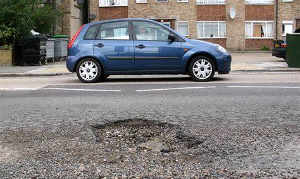Formula 1 Won’t Replace the Russian Grand Prix, and That’s Good

Is it Sochi bad thing that this was canceled? Photo: Rudy Carezzevoli (Getty Images)
Last year, Formula 1 proudly rolled out the red carpet for the record-breaking 23-race calendar that it had planned for the 2022 season. But as with every sporting series in these trying times, changes were soon made, and, following the cancellation of the Russian Grand Prix, F1 has announced that actually, 22-races is quite enough.
By serving up a season that included a new race in Miami and returning events in places like Canada, Japan and Singapore, F1 was flying high when it first announced the calendar for 2022.
But before racing had even begun for the all-new season, Formula 1 rightly canceled the Russian Grand Prix after the country invaded Ukraine in February this year. The decision not to race in Russia was welcomed by drivers like Sebastian Vettel, and the fallout of the country’s invasion also saw the Haas team drop Russian driver Nikita Mazepin.
In the weeks following F1’s retreat from Russia, onlookers seemed to uncover an endless stream of rumors and myths as to what circuit could replace the Sochi Autodrome on this year’s calendar. But now, F1 has announced that it won’t be a double-header in Singapore, nor a return to super-sub Turkey. Instead, we’re just having a week off. And that’s a good thing.
The Haas F1 team didn’t Russia decision on Nikita Mazepin’s future Photo: Rudy Carezzevoli (Getty Images)
G/O Media may get a commission
31% Off
AstroAI Digital Tire Inflator
Top up your tires before you drive
Don’t risk heading out on the road with tires that are less than perfect. This digital tire inflator gives you an accurate read of your PSI, and lets you top up your tires from home.
As it stood, 23 races was a lot for F1 to undertake in a year. Sure, F1 has had 20 races on the calendar as far back as 2012, when the sport hosted 20 races in 19 countries, but that figure has been steadily rising in recent years. Further, the 22 races that took place in 2021 took a heavy toll on teams, drivers and their cars.
In an average grand prix weekend, teams will arrive at the track with their cars and equipment on the Wednesday before a race at the latest. They will then rush to pack everything away straight after the checkered flag flies and be cleared out and back on the road in as little as eight hours.
But despite a speedy clear down, that still means that teams are out at the track for at least five days for every grand prix, and that adds up to at least 115 days away from home every year on a 23-race calendar.
The effects long days at the track, long days traveling, and chopping and changing time zones can have on your body and work is a bit crazy. So there’s no surprise that many teams were hesitant to celebrate the 23-race calendar when it was first announced.
But I’m sure F1’s bigwigs can happily forgo a few long nights as long as the racing action stays spicy throughout the long season, right? Well, here’s the other issue that might arise: We’re not really sure if the current crop of engines can last for a 23-race calendar.
Are you happy we aren’t Russian back here? Photo: Rudy Carezzevoli (Getty Images)
When the latest generation of hybrid power units were introduced in 2014, there were 19 races on the calendar and teams were allowed to use five power units over the course of the season. Now, we’re up to 22 races, and teams need to ration their engine components even more. So who knows how many teams would be starting the final race of the season without any kind of engine penalty?
There are also budgetary-restrictions to consider this year, along with the extra strain that three sprint race trials might be having on teams.
But, you might be shouting, even a bad race is better than no race, right?
Well, is it? The popular options for a replacement for Sochi on this year’s calendar seemed to be a second race somewhere like Singapore, Japan or even America while other people suggested a return to Qatar could be on the cards.
But with the excitement around Singapore and Japan returning to the calendar for the first time since 2019 already sky-high, would a second race in either location be able to live up to the hype?
And as feeder series Formula 2 has proven with its addition of a race in Le Castellet to this year’s calendar, more races for the sake of more races isn’t always popular with the fans.
So viewers shouldn’t bemoan the break in the calendar we’ll have to wait through come September. After all, that 19-day gap between Italy and Singapore is now the longest break teams will have this year, save for the summer shutdown.



